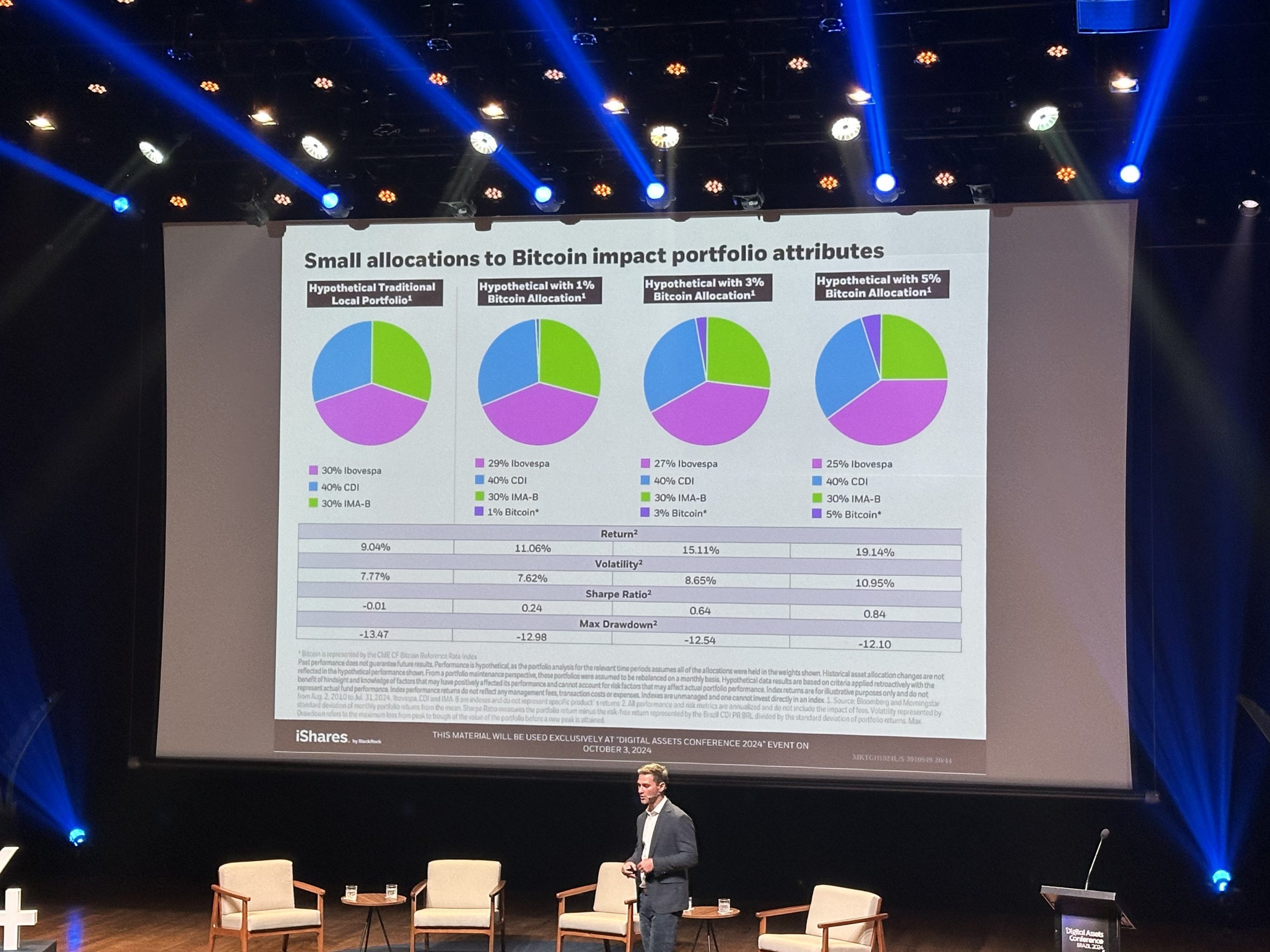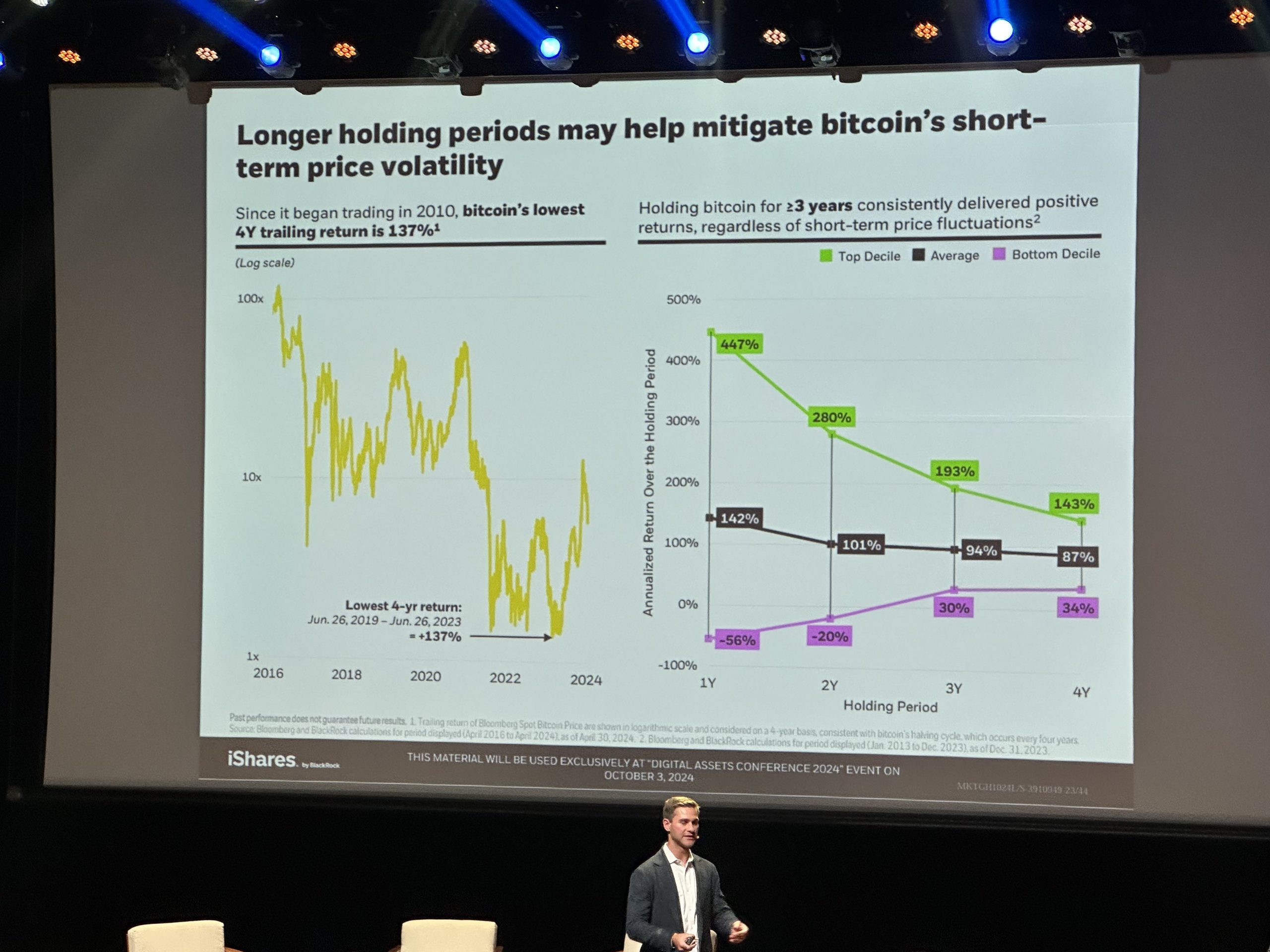Key Insights
- Data from BlackRock indicates that including Bitcoin in portfolios can greatly exceed returns from traditional investment options.
- BlackRock highlights Bitcoin’s function as a safeguard against the depreciation of fiat currencies.
Disseminate this article
During today’s Digital Assets Conference, BlackRock presented its findings on Bitcoin’s volatility and potential for growth, asserting that Bitcoin’s volatility has considerably reduced and is expected to decrease further over time.
BREAKING: BITCOIN’S VOLATILITY HAS DECLINED AND WILL CONTINUE TO FALL – BLACKROCK pic.twitter.com/iCWafcyLyD
— marty (@thinkingvols) October 3, 2024
BlackRock, the largest asset management firm globally, underscored Bitcoin’s changing role in the international financial landscape. They noted that Bitcoin’s volatility has been consistently decreasing, a pattern that they believe will persist as adoption increases and the asset evolves.
According to their data, including Bitcoin in investment portfolios enhances risk-adjusted returns over various durations. Portfolios with allocations of 1%, 3%, or 5% to Bitcoin exhibited greater returns over periods of one, two, five, and ten years compared to traditional portfolios.


While Bitcoin resulted in a slight increase in volatility for these theoretical portfolios, the likelihood of enhanced returns generally overshadowed the minor risk increase. For instance, portfolios with a 5% Bitcoin stake yielded a remarkable 19.1% return in the long run, greatly surpassing the 11% return from traditional portfolios devoid of Bitcoin exposure.
Furthermore, BlackRock highlighted the significance of maintaining Bitcoin investments over the long term concerning its volatility. The firm pointed out that Bitcoin’s lowest four-year trailing return remains an impressive 137%, and holding for three years or longer consistently leads to positive outcomes.


Moreover, BlackRock juxtaposed Bitcoin to gold and US Treasuries, drawing attention to its fixed supply, decentralized structure, and minimal correlation with conventional assets, thereby positioning it as a buffer against eroding confidence in governments and fiat currencies.
Additionally, BlackRock recognized that while Bitcoin’s volatility is still comparatively high, it has significantly decreased as the asset matured. Their analysis indicated Bitcoin’s minimal correlation with gold (0.1) and the S&P 500 (0.2), underscoring its classification as a distinct asset category.
Finally, BlackRock reaffirmed Bitcoin’s potential to act as a safeguard against the decreasing value of fiat currencies, particularly the US dollar. By illustrating the dollar’s decline since 1913, they characteristically established Bitcoin as a protective asset against inflation. Through offering Bitcoin ETFs, BlackRock affirms its confidence in Bitcoin’s enduring worth and its growing role within financial markets.








